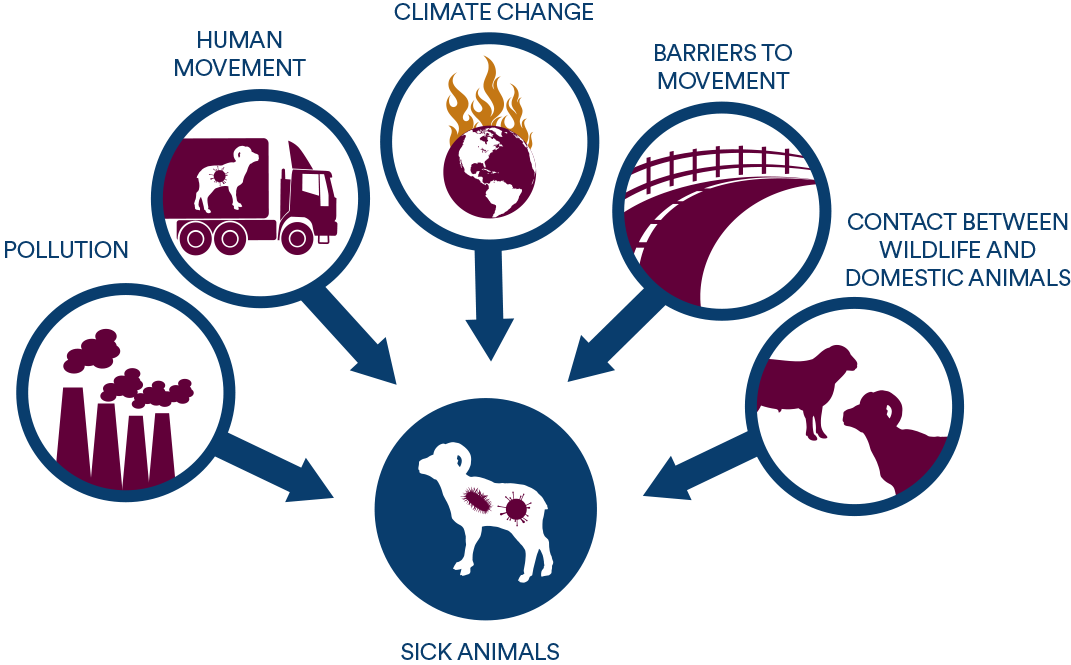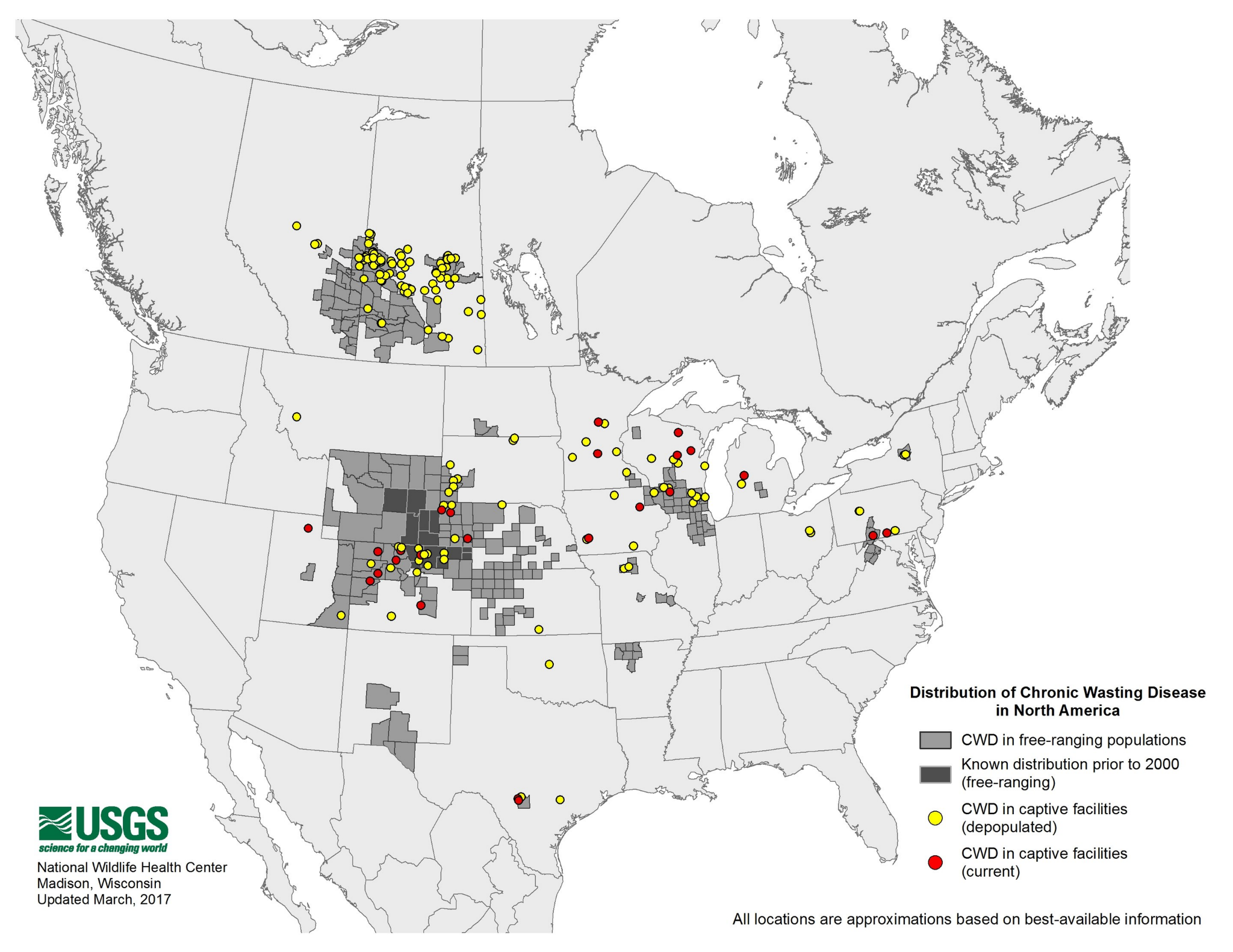Wildlife Disease Ecology
Wildlife Disease Ecology
Disease occurrence and the severity of disease outbreaks are increasing in wildlife. These increases are largely driven by human-caused factors such as pollution, human movement of animals, changes in the environment that alter animal dispersal and migration routes, and increased contact between wildlife and domestic animals. Therefore, preventing disease outbreaks is becoming recognized as an important component of wildlife conservation and human health.
Our lab is focused on using genomic (DNA) approaches to address important questions in disease ecology. For example, we investigate how distribution and movement of animals impacts disease spread across varied environments and how genetics is related to disease susceptibility.
With mule deer declines, and questions of how disease, genetic diversity, migration movements, and land development and use activities in Wyoming are interacting to impact population health and numbers, are more important to address than ever. See link to Mule deer below.
Learn more about disease ecology:



